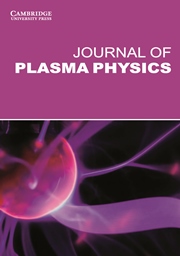Article contents
Regular and chaotic dynamics of non-spherical bodies. Zeldovich’s pancakes and emission of very long gravitational waves
Published online by Cambridge University Press: 13 July 2015
Abstract
In this paper we review a recently developed approximate method for investigation of dynamics of compressible ellipsoidal figures. Collapse and subsequent behaviour are described by a system of ordinary differential equations for time evolution of semi-axes of a uniformly rotating, three-axis, uniform-density ellipsoid. First, we apply this approach to investigate dynamic stability of non-spherical bodies. We solve the equations that describe, in a simplified way, the Newtonian dynamics of a self-gravitating non-rotating spheroidal body. We find that, after loss of stability, a contraction to a singularity occurs only in a pure spherical collapse, and deviations from spherical symmetry prevent the contraction to the singularity through a stabilizing action of nonlinear non-spherical oscillations. The development of instability leads to the formation of a regularly or chaotically oscillating body, in which dynamical motion prevents the formation of the singularity. We find regions of chaotic and regular pulsations by constructing a Poincaré diagram. A real collapse occurs after damping of the oscillations because of energy losses, shock wave formation or viscosity. We use our approach to investigate approximately the first stages of collapse during the large scale structure formation. The theory of this process started from ideas of Ya. B. Zeldovich, concerning the formation of strongly non-spherical structures during nonlinear stages of the development of gravitational instability, known as ‘Zeldovich’s pancakes’. In this paper the collapse of non-collisional dark matter and the formation of pancake structures are investigated approximately. Violent relaxation, mass and angular momentum losses are taken into account phenomenologically. We estimate an emission of very long gravitational waves during the collapse, and discuss the possibility of gravitational lensing and polarization of the cosmic microwave background by these waves.
Information
- Type
- Research Article
- Information
- Copyright
- © Cambridge University Press 2015
References
- 4
- Cited by

